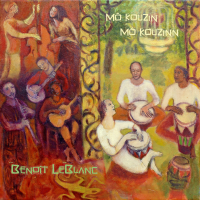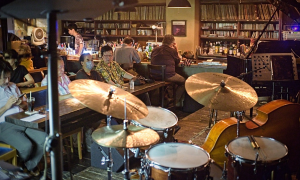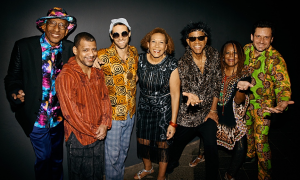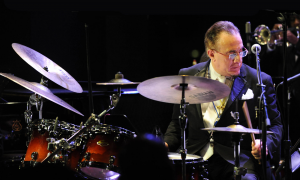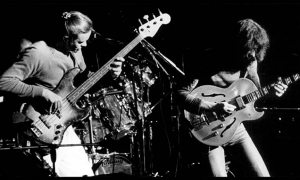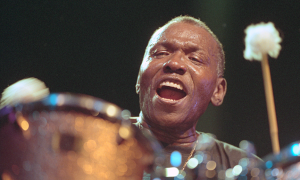Home » Jazz Articles » In the Artist's Own Words » Venissa Santi: Reflections on the Cuban Roots of Bienvenida
Venissa Santi: Reflections on the Cuban Roots of Bienvenida
In the music you will find many rhythms and styles, eloquent prose and intricate rhyme.
 Singer Venissa Santi's debut, Bienvenida (Sunnyside, 2009) offers a satisfying hybrid of straight-ahead jazz with rhythms from her family's homeland, Cuba. The music is highly listenable and, in many ways, speaks for itself—even to an English-speaking audience. However, the ethnic flavorings may stimulate for some a desire to grasp the meaning of the Spanish lyrics and define the rhythmic variations that occur in the Cuban-based music. To fill the information gap for All About Jazz readers, Santi agreed to offer some thoughts on the matter:
Singer Venissa Santi's debut, Bienvenida (Sunnyside, 2009) offers a satisfying hybrid of straight-ahead jazz with rhythms from her family's homeland, Cuba. The music is highly listenable and, in many ways, speaks for itself—even to an English-speaking audience. However, the ethnic flavorings may stimulate for some a desire to grasp the meaning of the Spanish lyrics and define the rhythmic variations that occur in the Cuban-based music. To fill the information gap for All About Jazz readers, Santi agreed to offer some thoughts on the matter:
Of the CD, Santi says: "This record is woven between elements that are one-half jazz and one-half Cuban. Interestingly enough, this is also true of the players on the record. Robert and Mike Rodriguez and I are first generation Cuban-American. Yunior Terry, Cuco Castellanos, and Francois Zayas are all Cuban born and raised. In addition, the recording owes a lot to Daoud Shaw, who was Van Morrison's longtime drummer, and who served as sound engineer, allowing us the use of his wonderful studio at RadioActive Productions, where I took the opportunity to record the fruit of my years of studying and absorbing these musical styles. The record has all three forms of Rumba: Yambu (accent on "u") Guaguanco (accent on "o") and Columbia. Bembe (accent on.the last "e"); some Abakua and Danzon—treasures from the beloved bolero repertoire—cha cha cha, and a little son montuno. Add jazz sensibilities, repertoire, singing technique and arranging, and we fill in the jazz component."
Of the Cuban origins of both the language and music in the songs on the CD, Santi explains: "Los Van Van says it best: 'somos la mezcla perfecta,' that is, 'we are the perfect mix, Somos Cubano Espanol Africano.' 'We are Cuban Spanish and African.' Cubans are known to speak Spanish very well, fast, melodic with 'sabor' flavor and with fierceness. In the music you will find many rhythms and styles, eloquent prose and intricate rhyme. Cubans have a very distinct tone to their accent and their slang, as do all Latino people and countries. African phrases appear in speech and have been carried through time. This kind of text appears in songs, including secular folk lyrics of daily life and sacred songs for the Orishas (deities).
Santi also generously offers a translation of the Spanish song titles and some thoughts on each track:
"'Convergencias' means 'Convergences.' This is a classic bolero that was originally recorded as a son by famed Cuban singer Miguelito Cuni. Written by Bienvenido Gutierrez, its intricate poetry is matched by its chromatic harmony and speaks of a love and reflection encountered and dreamed of.
"'Lucerito de mi amor'means 'Love Star.' A lucero is a glowing star in the sky that in this song is wished upon by a person in love who, in fear and wonder asks the lucerito, 'Is this love the legend that I've dreamed of?' The track begins with a brief cassette recording of my beloved grandfather who, before his death, made a few tapes of himself singing his songs a capella.
"'Columbia Pa' Miguel Angel' is a dedication to my young teacher, Miguel Angel Dreke of Matanzas Cuba. Of the three styles of Rumba, Columbia is a fast 6/8 featuring specific drum patterns, form and song sequence, with interjected calls by the singer, who alternates lyrics of salutation, stories, wisdom, and verbal challenges to show who is the most vocally talented. In these verses I literally say things like, 'I look small, but I don't think you can pop me 'cause the pepper is small and what bites you bites you.' Towards the end, between the drum and conga solo, I interject two songs for Ogun, the solitary warrior deity, and end with a common coro for him: Awanillo Taladde. In this sequence I salute Matanzas, Minini, founding father and singer of the rumba group Afro Cuba de Matanzas.
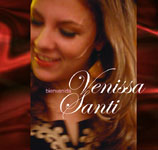 "'Como Fue' is a classic bolero. The title means 'What Happened?' The lyrics mean something like, 'I fell in love with you. Was it your eyes, or your mouth? Was it your hands or your voice? Maybe it was the impatience of waiting so long for your arrival.'
"'Como Fue' is a classic bolero. The title means 'What Happened?' The lyrics mean something like, 'I fell in love with you. Was it your eyes, or your mouth? Was it your hands or your voice? Maybe it was the impatience of waiting so long for your arrival.'
"'Cumpling Cumpling' is a traditional Rumba. The title imitates the sound of a bell. It says 'sound the bell ti ling ti lang.' It says 'to see you inspires glory, and a little tune is what I will sing for you.' I then enter a passage that I wrote, which salutes Rumberos—singers, players and dancers of today and yesterday. I tell them that to hear them inspires glory. The end chorus was written by Elio Reve, a Cuban band leader."
Several of the tracks incorporate a bolero rhythm. While many are familiar with composer Maurice Ravel's "Boléro"—a 1928 classical composition based upon a Spanish dance—the bolero as a Latin rhythm may be less known. Santi explains: "Bolero is a rhythmic feel and song form that is said to have originated in Santiago de Cuba, and was brought up by the trova or troubadour/ minstrel singers. Later it spread as far as Mexico. It has a long history of composers and is often used in the Latin standard repertoire. It is the equivalent of a ballad, and there are distinct patterns played by conga and maraca in a traditional instrumentation. But I made some variations on the bolero. For example, I felt 'Como Fue' would be a killer blues, 'Delirio' would be a great up-tempo swing, and 'Convergencias' would make a lovely danzon."
Photo Credit
Courtesy of Venissa Santi
Tags
PREVIOUS / NEXT
Support All About Jazz
 All About Jazz has been a pillar of jazz since 1995, championing it as an art form and, more importantly, supporting the musicians who make it. Our enduring commitment has made "AAJ" one of the most culturally important websites of its kind, read by hundreds of thousands of fans, musicians and industry figures every month.
All About Jazz has been a pillar of jazz since 1995, championing it as an art form and, more importantly, supporting the musicians who make it. Our enduring commitment has made "AAJ" one of the most culturally important websites of its kind, read by hundreds of thousands of fans, musicians and industry figures every month.











